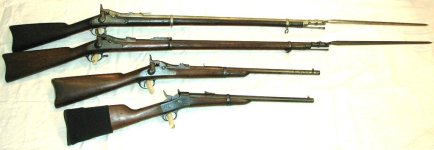DWalt
Member
It is not true that only black powder can be used for reloading. Reloading manuals are full of smokeless powder recipes that are perfectly safe to use in Trapdoor rifles and carbines, usually faster powders. Pyrodex also works well. I have found mine shoots very well using Pyrodex.
There are also reloading recipes made for use in more modern rifles, and those are too hot for use in Trapdoors.
There are also reloading recipes made for use in more modern rifles, and those are too hot for use in Trapdoors.





